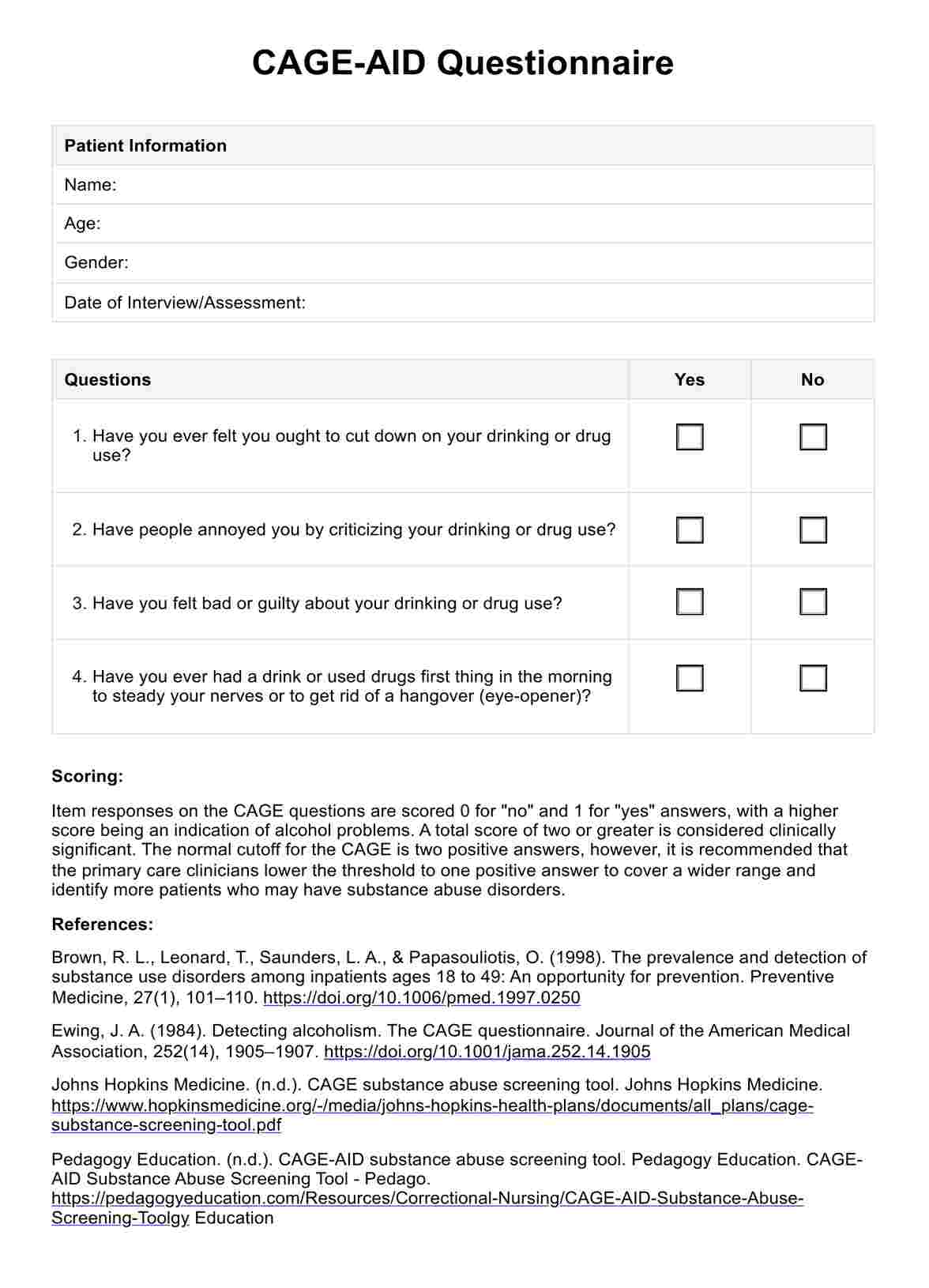Commonly abused substances range from legal substances like alcohol, tobacco, and prescription drugs, to illegal drugs like cocaine, heroin, and methamphetamines.

CAGE-AID Questionnaire
Explore using the CAGE-AID Questionnaire as an initial screening tool for substance use disorder and the severity of drinking or drug use.
CAGE-AID Questionnaire Template
Commonly asked questions
Yes. Factors such as genetics, family environment, mental health, trauma, and peer influence can make some individuals more susceptible to developing substance abuse disorders.
Yes, with the right support and treatment, recovery is definitely possible. It's important to remember that the process is often long-term, and relapses can occur. Recovery requires the individual’s continued effort and support from healthcare professionals, family, and friends.
EHR and practice management software
Get started for free
*No credit card required
Free
$0/usd
Unlimited clients
Telehealth
1GB of storage
Client portal text
Automated billing and online payments











